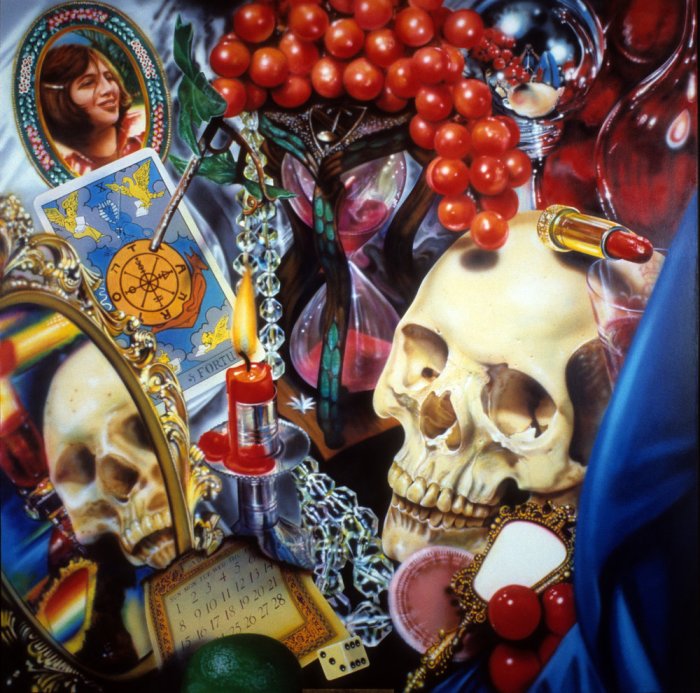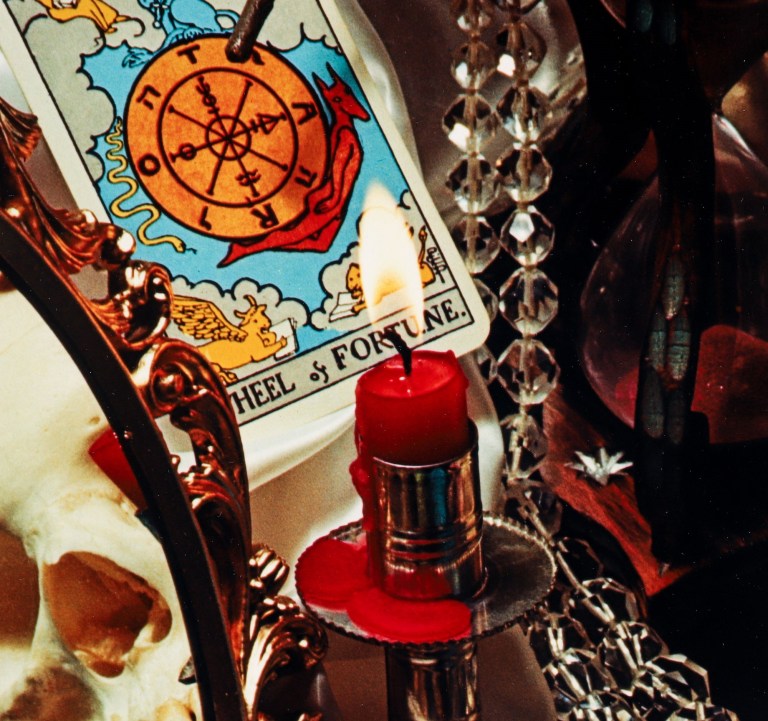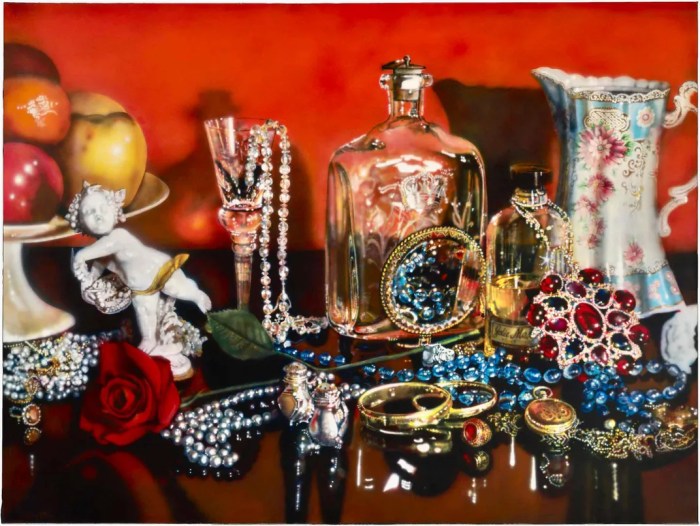Wheel of fortune by audrey flack – Audrey Flack’s “Wheel of Fortune” stands as a captivating embodiment of Pop Art’s fascination with consumer culture and the human experience. Created in 1977, this photorealistic painting depicts a vibrant roulette wheel, inviting viewers to contemplate the interplay of chance, destiny, and the relentless passage of time.
Flack’s masterful use of photorealism lends the artwork an air of hyperreality, blurring the boundaries between painting and photography. The vibrant colors and intricate details draw the viewer into the scene, creating a sense of immersion that amplifies the painting’s symbolic depth.
Overview of Wheel of Fortune by Audrey Flack

Audrey Flack’s “Wheel of Fortune” (1978) is a hyperrealistic painting that depicts a spinning roulette wheel against a neutral background. It explores themes of chance, fate, and the passage of time. The artwork is significant in Flack’s career as it marked her transition from photorealism to a more conceptual approach.
Symbolism and Meaning, Wheel of fortune by audrey flack
The wheel of fortune is a centuries-old symbol of luck and destiny. Flack uses it to represent the unpredictable nature of life and the forces beyond human control. The wheel’s rotation suggests the cyclical nature of existence, where fortune and misfortune can change rapidly.
The colors in the painting are muted and somber, evoking a sense of mystery and uncertainty. The wheel itself is a dark, metallic gray, symbolizing the unknown and the inevitability of fate.
Artistic Technique
Flack employed photorealism in “Wheel of Fortune,” using a meticulous technique to create an illusion of photographic accuracy. She projected an image of a roulette wheel onto a canvas and then painstakingly painted over it, capturing every detail with precision.
This technique adds to the painting’s sense of realism and immediacy. The viewer is drawn into the scene, feeling as if they are witnessing the wheel spin in real-time.
Context and Influences
Flack’s “Wheel of Fortune” was created during a period of social and political uncertainty in the United States. The Vietnam War and the Watergate scandal had shaken public trust in institutions and the idea of a stable future.
Flack’s work reflects this mood of disillusionment and skepticism. It also draws inspiration from the work of Pop artists such as Andy Warhol and Roy Lichtenstein, who used familiar imagery to explore consumer culture and the American Dream.
Legacy and Impact
“Wheel of Fortune” has become one of Flack’s most iconic works. It has been exhibited in major museums worldwide and has been reproduced in countless publications. The painting has influenced subsequent generations of artists, inspiring them to explore themes of chance, destiny, and the nature of reality.
Additional Considerations
- How does the painting’s title relate to its symbolism and meaning?
- What are the ethical implications of using photorealism to depict a game of chance?
- How does “Wheel of Fortune” compare to other works by Flack or similar artists?
| Artwork | Artist | Year | Medium |
|---|---|---|---|
| Wheel of Fortune | Audrey Flack | 1978 | Oil on canvas |
| Marilyn Diptych | Andy Warhol | 1962 | Acrylic and silkscreen on canvas |
| Drowning Girl | Roy Lichtenstein | 1963 | Oil and magna on canvas |
“‘Wheel of Fortune’ is a powerful reminder that our lives are not always under our control. It’s a beautiful and haunting work of art that stays with you long after you’ve seen it.”
– Roberta Smith, New York Times
FAQ Explained: Wheel Of Fortune By Audrey Flack
What is the significance of the roulette wheel in “Wheel of Fortune”?
The roulette wheel serves as a powerful symbol of chance and unpredictability, evoking the ever-present role of luck in human affairs.
How does Flack’s use of color and composition contribute to the painting’s meaning?
Flack’s vibrant colors and carefully arranged composition create a sense of visual tension and energy, mirroring the unpredictable nature of the wheel of fortune.
What are some of the broader cultural and historical influences that shaped “Wheel of Fortune”?
The painting reflects the fascination with consumer culture and the exploration of chance and fate that were prevalent during the Pop Art era.

